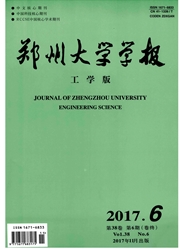

 中文摘要:
中文摘要:
目前对风敏感结构的优化方法研究集中于高层建筑结构,很少针对大跨空间结构.准则法是求解多设计变量优化问题的有效方法.首先建立复杂空间桁架结构的抗风优化设计理论和方法.然后以一实际双层柱面网壳结构为研究对象,基于风洞试验数据计算的等效静力风荷载进行优化设计,并讨论了截面积下限、满应力步长等因素对优化结果的影响.研究表明,在所有杆件最大应力不超过初始设计值的条件下,结构总重降低了约48%,通过设定截面积下限不仅保证截面积的合理取值,也使材料性能得到充分利用,进一步降低结构总重.
 英文摘要:
英文摘要:
Optimization studies on wind-sensitive structures focus on high-rise buildings, and large span spa- tial structures have seldom been involved. For optimization problems with a lot of design variables, the criteria method is usually effective. Design theory and numerical program of wind resistant optimization for complex spatial truss structures are firstly presented. Then, a real double-layer cylindrical reticulated shell is optimized based on the equivalent static wind loads from wind tunnel tests, discussing the influences of area lower limit and full stress step. The results show that the total structural weight is decreased by 48% when the maximum stress is less than the initial correspondent. By setting area lower limit, suitable area distribution is obtained, and material performance is fully made use of to achieve less structural weight.
 同期刊论文项目
同期刊论文项目
 同项目期刊论文
同项目期刊论文
 Wind-induced inter-story drift analysis and equivalent static wind load for multiple targets of tall
Wind-induced inter-story drift analysis and equivalent static wind load for multiple targets of tall 期刊信息
期刊信息
